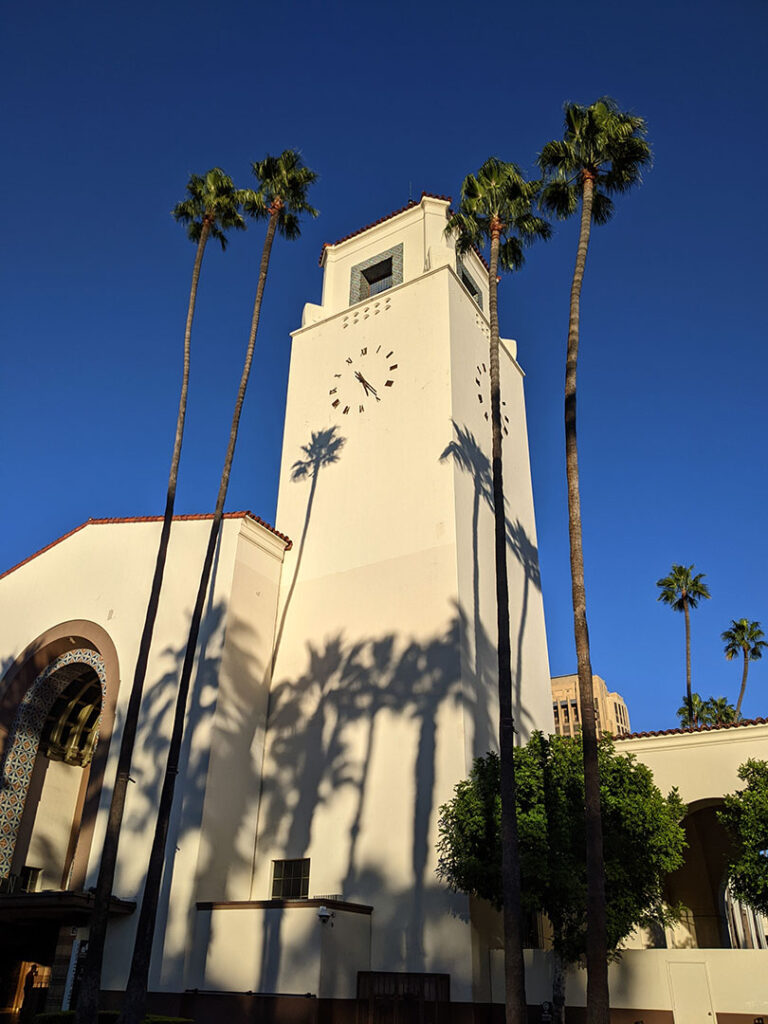
This is the front of Union Station. Prior to opening in May of 1939, Los Angeles had one station for each train line (Santa Fe, Southern Pacific, and Union Pacific). Union Station was designed by the same folks who architected Los Angeles City Hall, and it is one of the city’s landmark buildings.
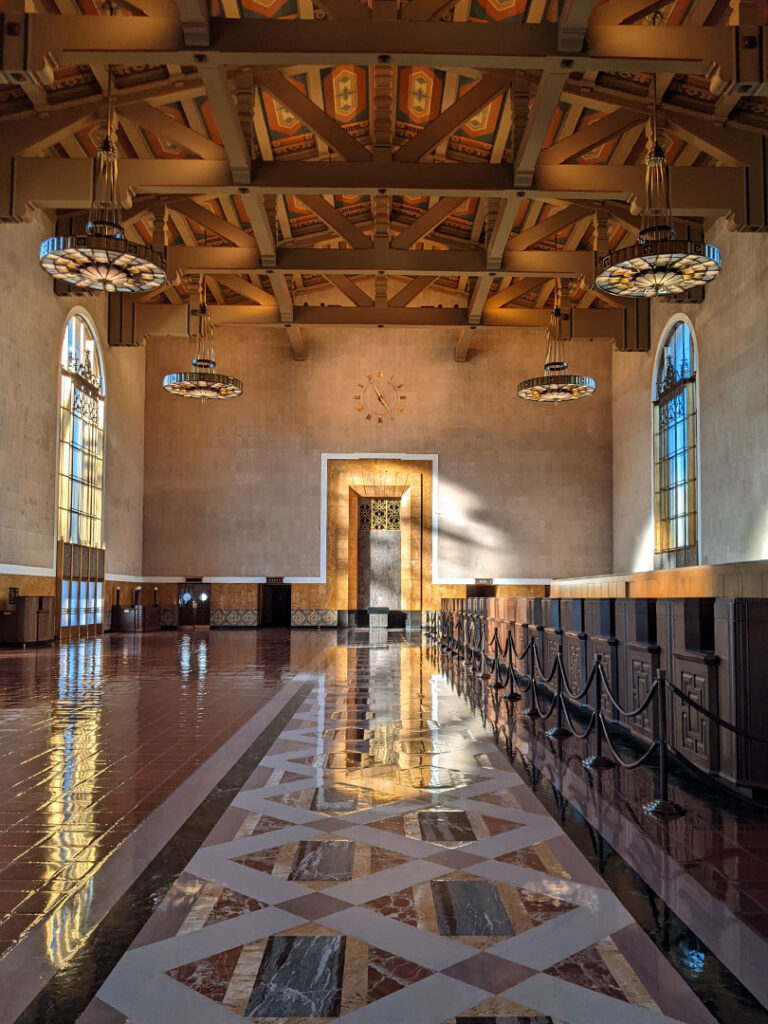
Some Hertz employees thought she should leave the car at Union Station with the keys locked inside (with the warning that Hertz would charge her for both the Union Station parking bill and the cost of breaking into the car to get the keys). Finally she found someone who saw the danger of leaving the car (she’d be liable if something happened), and who HIRED A TOW TRUCK to get the car from Union Station and take it to a real Hertz location. So we waited with the car until the tow truck showed up, handed off the keys, and then went to catch our train (marveling at our good luck to be at Union Station hours ahead of time–there was no way we would have made our train if the timing had been different).
The incompetence, the neglect, the entire situation baffles me. As I type this, Hertz’s website still lists Union Station as option number 16 for the Los Angeles area. I love Hertz for the Mustang GT-H, but I think I’m going to go with LITERALLY ANYONE ELSE next time I rent a car.
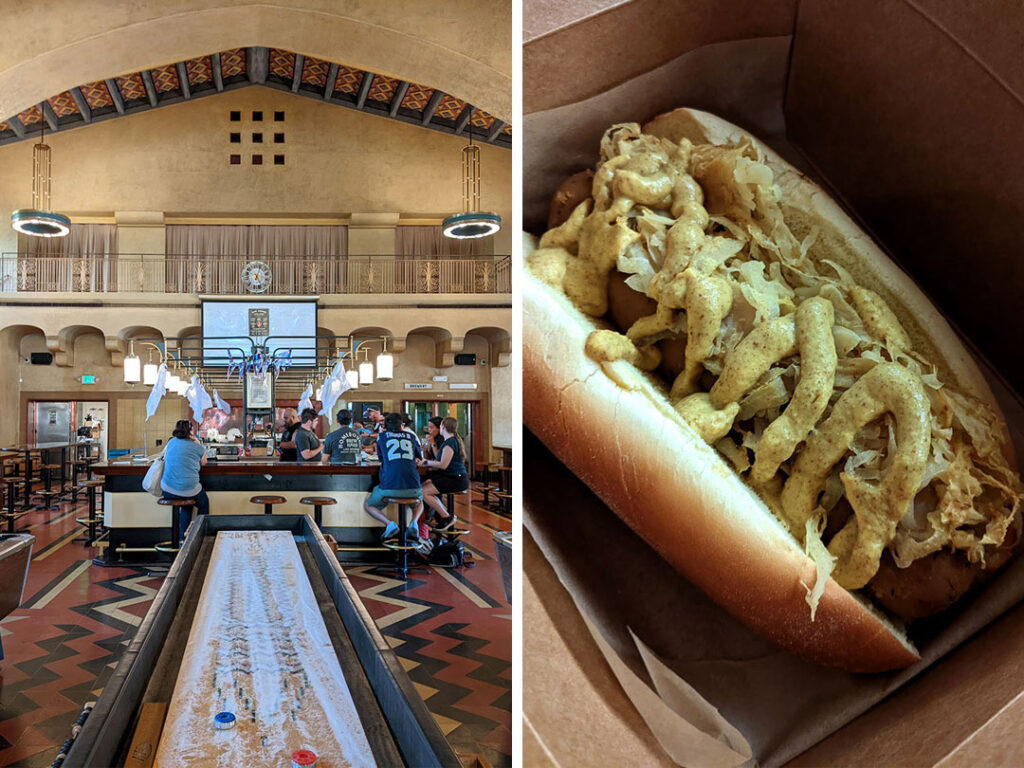
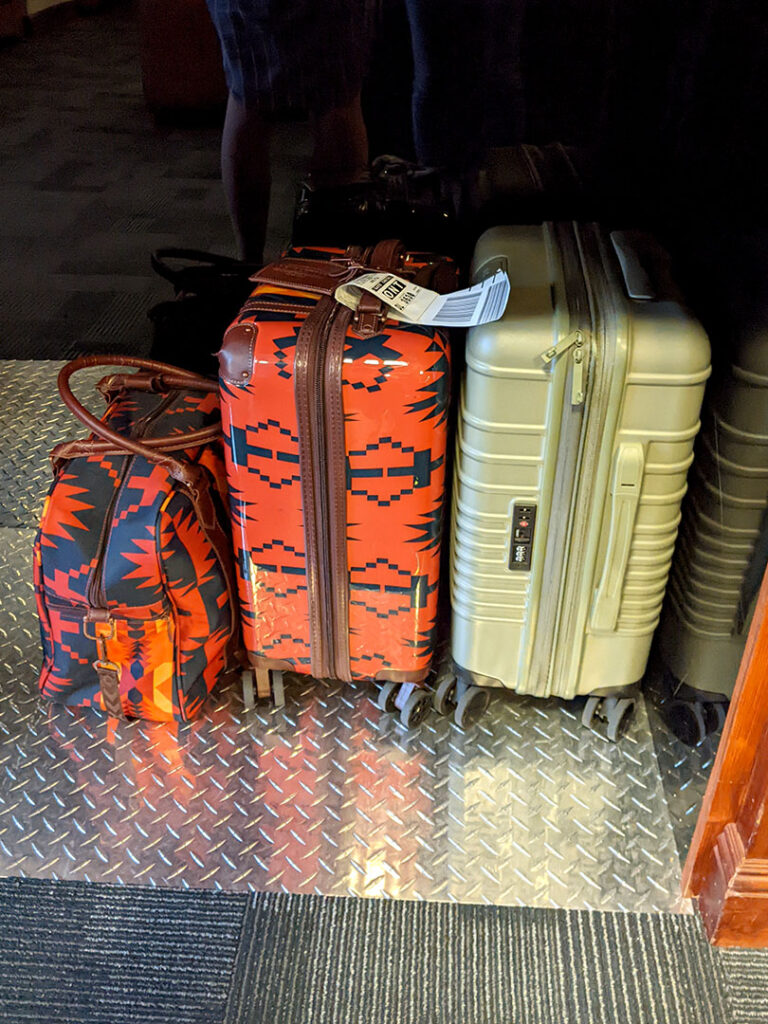
Booking the sleeper car also gives you access to Amtrak’s red hat service, which means a red cap-wearing employee loads you and your luggage into a golf cart and drives you to the train. (You load up directly from the Amtrak lounge, take the back way through a gate, and get to the train earlier than the coach class.) With the anticipation of your upcoming train ride and the cool California evening air, it’s not unlike the tram trip at Disneyland.
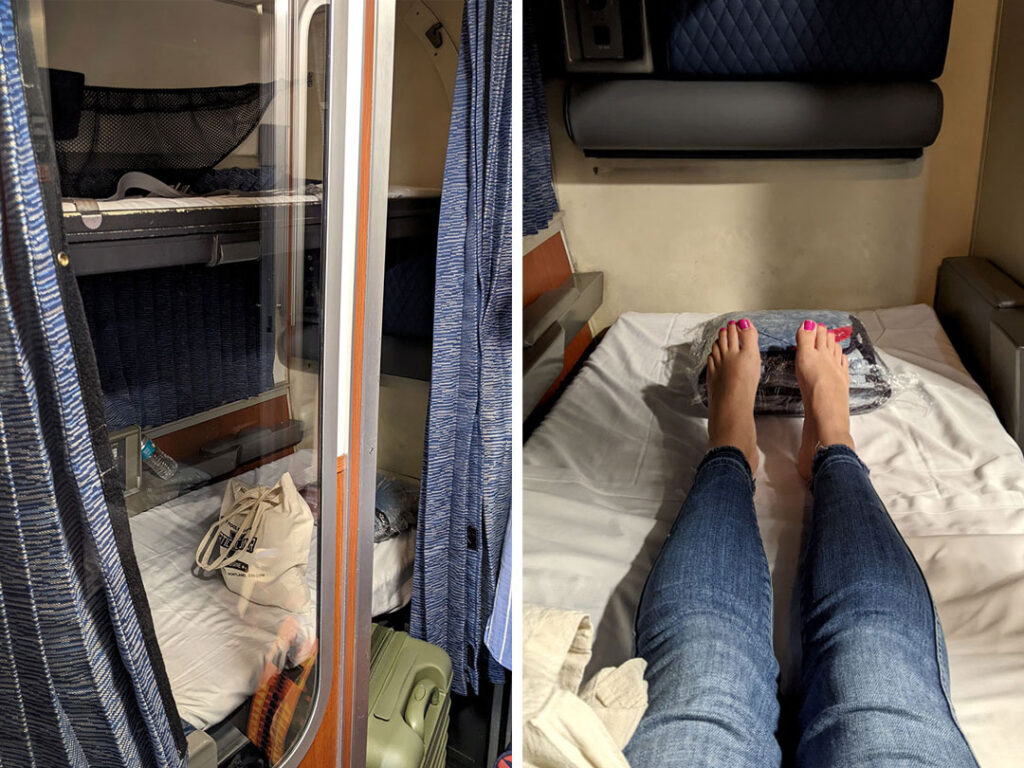
There’s a narrow (maybe one puffer jacket sleeve-wide) closet with some hangers, a box of tissues, two bottles of water (the water spigots on the train didn’t really work, so they have cases of water bottles available for drinking water), and one blanket and pillow set for each bunk (the internet recommended brining a second pillow from home, which we didn’t do). There’s some great reading lights (bright to the reader and nearly invisible to your bunkmate), an overhead light, and climate control (a fan in the ceiling for cool air, and a radiator along the window for heat). The air conditioning sort of worked, but the first day was broiling and the second day was too cold (the staff tried to make adjustments but never got it quite right, and it became such an issue that even the passengers in coach had heard about it). And although there is a door to the roomette, it doesn’t cut down on noise, and you can clearly hear crew and passengers getting on the train at 4 am (the first night was a boisterous group of male crewmembers who seemed to be thinking, “If we have to be up this early, everyone is going to be up this early!”)
But despite iffy climate control and thoughtless men, I loved our roomette. There’s a big window. It’s like you have a private front-row seat to the stunning Southwest. I kept thinking, “This is so much less stressful than driving. This is so much more comfortable than flying.” We had a good location next to our luggage and the bathrooms/shower, so even though everything was shared, it was as close as it would have been in a hotel room. (The bathrooms were basically airplane bathrooms. The shower was roomier and had plenty of towels/soap bars/shampoo, but the water doesn’t stay on very long and you have to keep pressing the button, but it works well overall.) Our roomette was far enough away from the train whistle that it wasn’t loud enough to wake us up (the internet said to watch out for that). For its massive two-story size, the train was remarkably smooth starting and stopping, like unless you were looking out the window you wouldn’t feel it until it got up to speed.
We were tucking into our bunks as the train left Union Station, and the train chugged through the night so that we woke up to the pink pre-dawn light of Maricopa, Arizona. The next post is about life on the train …